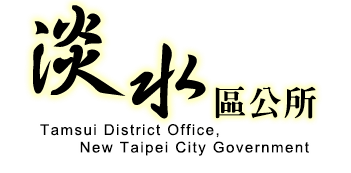.jpg)
missionary work as well as the spring-board to China and Japan for trade and missionary purposes.[A1] In 1641, in order to prevent their own trade routes to China and Japan from being cut by the Spanish, the Dutch drove the Spanish out and rebuilt the Fort (the existing Fort San Domingo).
The Dutch subdued the Pingpu tribe of the aboriginal Taiwanese and also employed ethnic Han people to settle here.
They began trading in sulphur, deer hide and other local products, turning Tamsui into a useful port for trade with China. In 1661, Zheng Chenggong (also known as Koxinga)[A2] crossed the Taiwan Strait from the east and drove the Dutch out of southern Taiwan. Tamsui was temporarily returned to Ming Dynasty rule under General Zheng. On March 9, 1872, Dr. George Leslie Mackay arrived at Tamsui and used it as the base for his missionary, medical and educational work. Westernized hospital and modernized schools were founded in Tamsui. This had a profound impact on the enlightenment of the early Taiwan people and society. Tamsui had its golden years during Japanese rule from 1888 to 1945 despite its loss of status as a prime port. This is because the river bed gradually became shallow, making large ships difficult to enter or exit the port. Meanwhile, the Japanese pushed ahead with the construction of Keelung Port , and with the benefit from the Taipei-Keelung railway, Keelung Port finally replaced Tamsui. Although the Japanese also planned to rebuild the whole port by dredging the river and enhancing the harbor equipment of Tamsui, they ultimately failed to save Tamsui from its fate, which was a gradual transformation to being a nominal international hub, eclipsed by Keelung. Since then, Tamsui’s economy shifted to fishing and farming of the hinterland near by. However, the aggressive public construction and high administrative efficiency of the Japanese government not only saved Tamsui from degradation, it transformed the port into the administrative and culture center for the surrounding villages and towns. After WWII, Tamsui was reduced to a small fishing port. Although the rumors of port reopening were often heard, they never materialized. With the development of the Greater Taipei Metropolitan area, the industrial and social structure of Tamsui began to shift.
The Dutch subdued the Pingpu tribe of the aboriginal Taiwanese and also employed ethnic Han people to settle here.
They began trading in sulphur, deer hide and other local products, turning Tamsui into a useful port for trade with China. In 1661, Zheng Chenggong (also known as Koxinga)[A2] crossed the Taiwan Strait from the east and drove the Dutch out of southern Taiwan. Tamsui was temporarily returned to Ming Dynasty rule under General Zheng. On March 9, 1872, Dr. George Leslie Mackay arrived at Tamsui and used it as the base for his missionary, medical and educational work. Westernized hospital and modernized schools were founded in Tamsui. This had a profound impact on the enlightenment of the early Taiwan people and society. Tamsui had its golden years during Japanese rule from 1888 to 1945 despite its loss of status as a prime port. This is because the river bed gradually became shallow, making large ships difficult to enter or exit the port. Meanwhile, the Japanese pushed ahead with the construction of Keelung Port , and with the benefit from the Taipei-Keelung railway, Keelung Port finally replaced Tamsui. Although the Japanese also planned to rebuild the whole port by dredging the river and enhancing the harbor equipment of Tamsui, they ultimately failed to save Tamsui from its fate, which was a gradual transformation to being a nominal international hub, eclipsed by Keelung. Since then, Tamsui’s economy shifted to fishing and farming of the hinterland near by. However, the aggressive public construction and high administrative efficiency of the Japanese government not only saved Tamsui from degradation, it transformed the port into the administrative and culture center for the surrounding villages and towns. After WWII, Tamsui was reduced to a small fishing port. Although the rumors of port reopening were often heard, they never materialized. With the development of the Greater Taipei Metropolitan area, the industrial and social structure of Tamsui began to shift.

